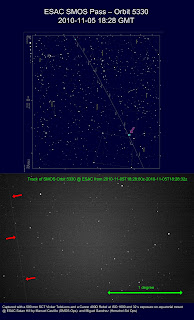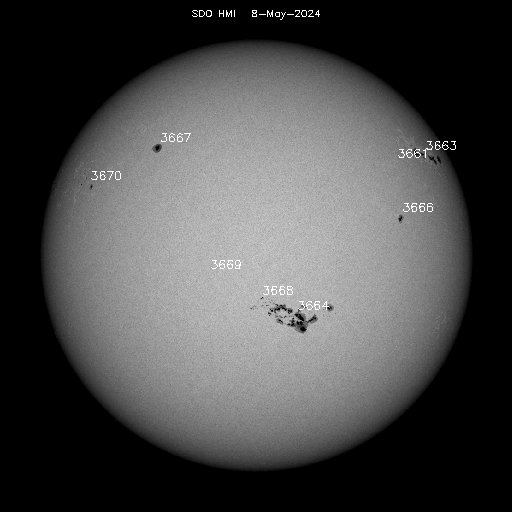As mentioned in the previous post, last Friday Miguel Sánchez and me expent few hours at SATAN Hill in ESAC to test few imaging and tracking topics of our equipment. The observing conditions, on spite of the New Moon, were pretty bad but still allowed to do some imaging tests. In particular, Miguel wanted to test the "Polar Align" option of the CG5 mount of his 15 cm Newtonian and I tried to do a manual Polar aligment refinement using as a reference the AR of an equatorial star to improve the orientation of the equatorial fork mount of my SCT C8. As the night conditions were not good enough to image low surface brightness objects like galaxies we selected as targets two planetary nebulae.
The following image shows the M27 Dumbbell Nebula. It was captured with the Miguel equipment and the Meade DSI CCD with 2 minutes of exposure without any additional guiding. The shape of the stars is very circular showing the good polar aligment achieved with the CG5 Mount. The image was obtained by means of only a histogram stretching using SAO Image SW. The central star can be identified without any doubt.
The next image shows the M57 Ring Nebula. It was captured with my telescope and a Canon 400D camera in the prime focus with ISO 1600. The picture was produced stacking four images of M57 with 2 minutes of exposure and stretching the histogram with AstroArt SW. As the shape of the stars is not circular, it means that something was wrong with the station of the telescope Maybe because it was very fast due to that the SMOS pass was comming.
 The Ring Nebula (M57)
The Ring Nebula (M57)I cannot resist the oportunity show an image never posted here of M57 produced four years ago (2006-07-13) with the Leo's telescope (a 60 cm Dobsonian) and the Meade DSI CCD. The picture was produced stacking 24 images of 1 second of exposure. The result as you see is quite impressive. The central star of the planetary nebula is clearly visible.







